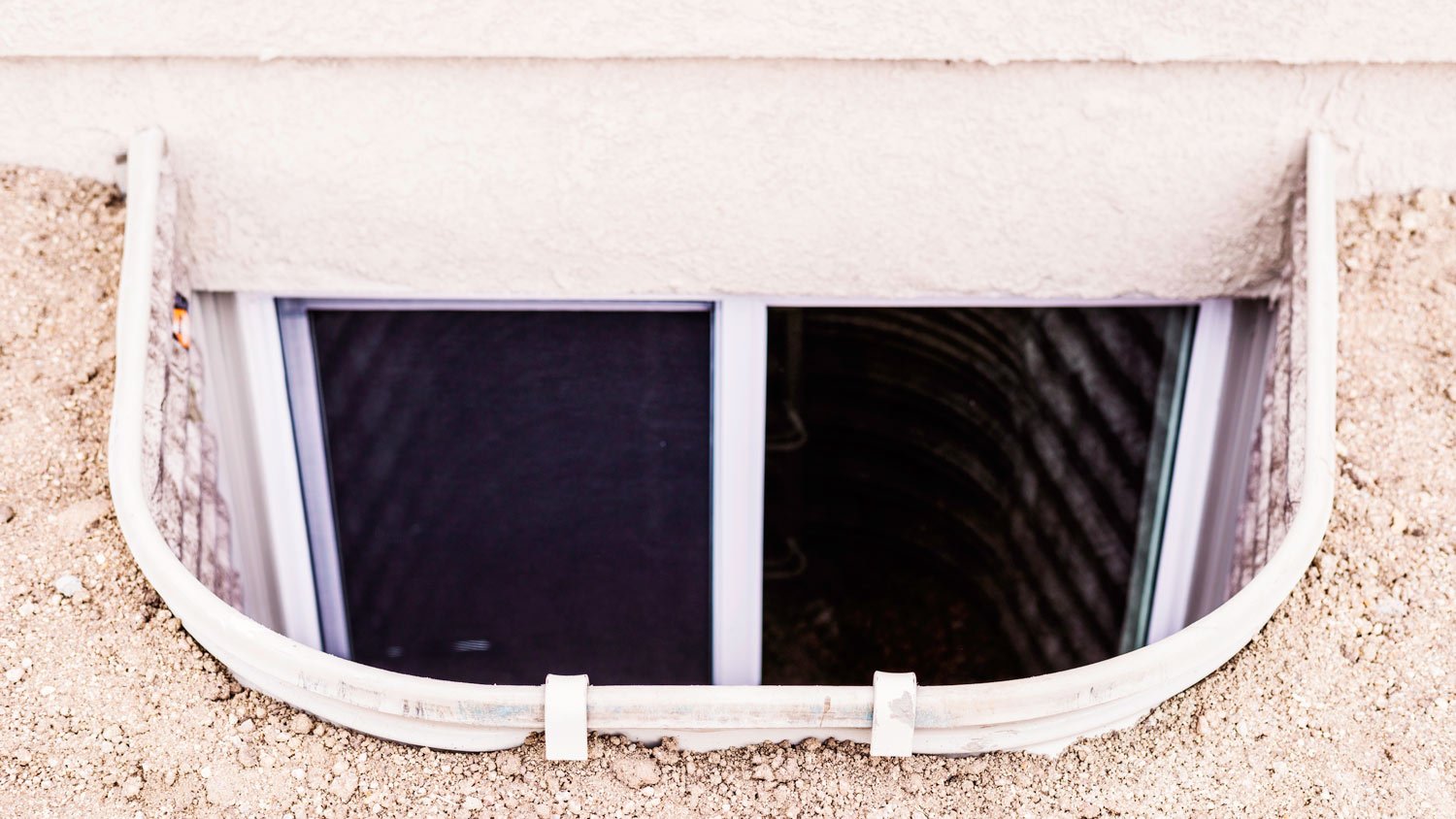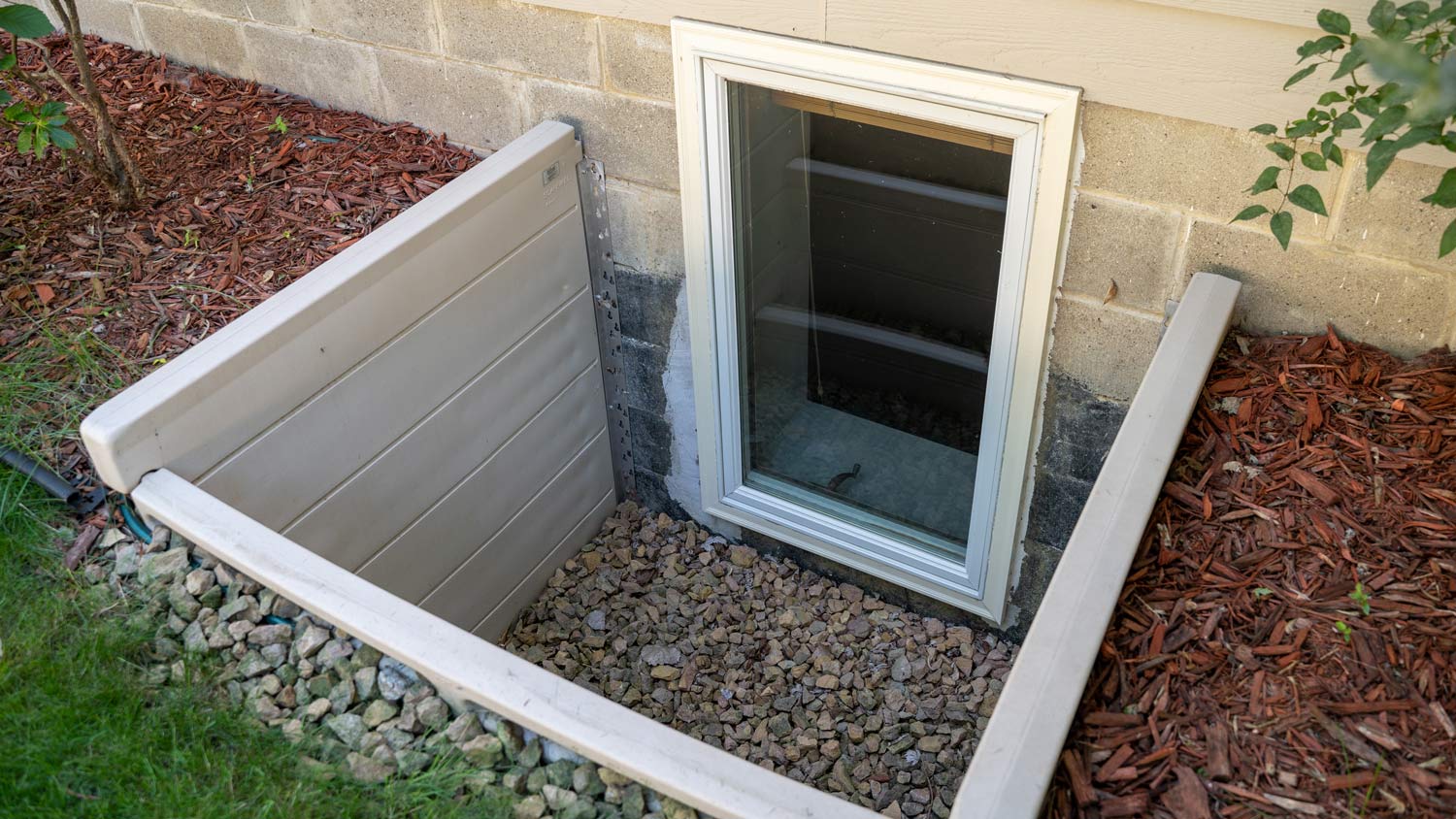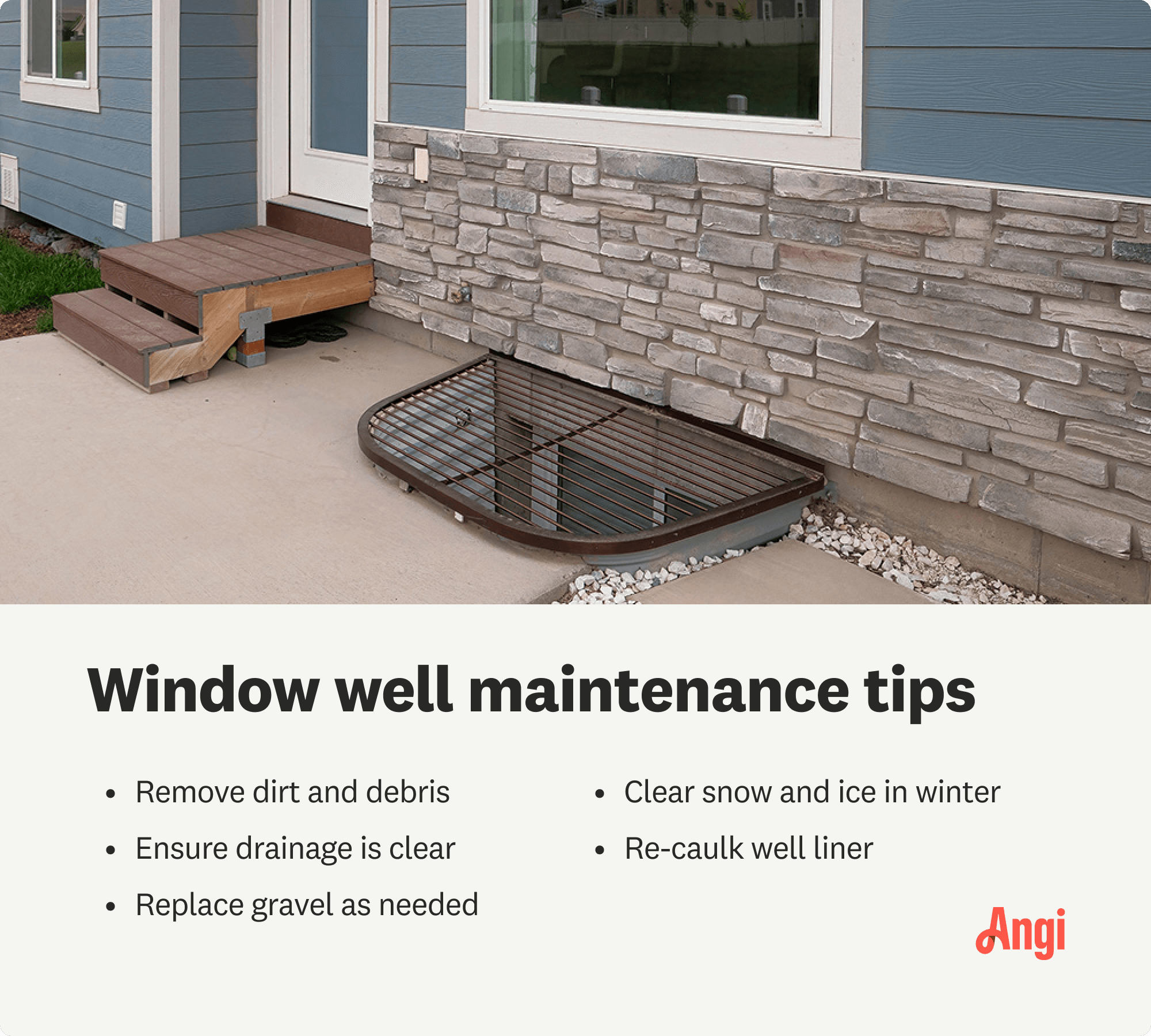
Window wells bring more natural light into your basement and can act as a safe point of egress. Learn about window well replacement costs in this price guide.
Keep your basement safe and let light in with a window well


Window wells provide clear space around basement and ground-level windows, allowing for easy egress.
They also allow light to make its way through lower-level windows.
Window wells require proper installation and regular maintenance to prevent damage or accidents.
Have you ever wondered about those semi-circular holes around basement windows? These important features are window wells, and they keep space around the window clear so it can be used as an egress point in an emergency. Window wells can also bring light into dark basements and drain water away from basement windows and the foundation. Find out all you need to know about these important safety features.

For homes with basement windows, a window well allows light to enter the basement while also providing an exit in case of emergency. Window wells are typically u-shaped, supported by a curved metal or plastic “wall” or barrier.
Window wells—when sized and installed correctly— provide a means of egress, or exit, from the basement level. That’s critically important in the event of a fire or other emergency that could trap someone in the basement. A window well gives a person the space to climb through the egress window, out of the basement, and up toward safety. Because window wells clear the space in front of a below-grade window, they allow more sunlight to enter the basement, too.
A contractor installs a window well directly surrounding a basement window. The window well holds the soil away from the window and the foundation immediately surrounding it, protecting vulnerable window seams from damage, rot, and mildew. From above, the window well will look like a hole right next to the house. The window well is attached directly to a home’s foundation to surround the space in front of the window.
Thanks to the window well, light and air can reach the basement window, and the window well provides enough clearance for the window to open. If someone needed to climb out of the window in an emergency, they’d have the room to make a quick exit, thanks to the space the window well holds clear. Some window wells also have stairs or a ladder included, making it easier for someone to climb up out of the hole.

According to the International Residential Code (IRC), a window well must be no less than 3 feet wide and 9 square feet in total. If the well is deeper than 4 feet, you’ll need a ladder or steps inside it, as well. Local building codes might have different or additional requirements.
When buying windows for your basement, make sure you add window wells to your cart, too. Given how much egress windows cost, it pays to make sure the window well you choose is sized appropriately for the window.
Window wells are typically made of a solid, nonporous material that can provide a sturdy barrier against the soil surrounding the home. You’ll often find window wells made of the following materials:
Galvanized steel: This is the most common material, but if the metal isn’t galvanized, you may end up having to replace your rusted window well.
Plastic: Though not as strong as galvanized steel, plastic is waterproof and rust-proof.
Concrete: Concrete is weather-resistant and durable, but it’s very heavy and more difficult to DIY
Fiberglass: You’ll find that fiberglass is quite strong and very durable, but it’s vulnerable to UV damage and fading
| Material | Pros | Cons |
|---|---|---|
| Steel | Easy to install; Long-lasting | Must be fully replaced if damaged; Prone to rust |
| Plastic | Budget-friendly; Easy to install | Easy to damage; Less attractive |
| Concrete | Extremely durable; Easy to repair | Costly; Difficult to install |
| Fiberglass | Lightweight; Attractive | Prone to warping; Expensive |
You can also find window well covers to fit a window well. Some manufacturers even offer both the well and the cover as a set, which makes it super easy to get the proper sizing for a new installation. Window well covers are often clear plastic, which lets light in while keeping everything else out.
Although they’re useful structures, you do need to keep an eye out for common problems with your window wells.
Damage to the structure: Poor installation or maintenance can lead to damage, such as the barrier bowing in.
Improper drainage: If downspouts and gutters aren’t efficiently directing water away from the foundation, you can run into drainage problems in your window wells, which will affect your home’s foundation.
Leaking: A damaged seal or improperly installed window well can let water inside, and you’ll need to call a pro to repair your leaking window.
Accidents: If the window wells don’t have covers, someone (or something) could fall in and get hurt.
Regular window maintenance can help you avoid problems and keep your basement windows clean, clear, and full of natural light.

As you can imagine, window well maintenance is key to protecting your home’s foundation and keeping people safe.
Window wells should be clean and empty, so check them often to make sure nothing has fallen in, such as dirt, leaves, sticks, or toys. When things pile up in the bottom of a window well, it prevents someone from being able to escape, not to mention it blocks light and airflow.
You’ll want to make sure the drainage system is clear and running well; check the gravel at the bottom for soil or sediment that could clog the drain. Adding a window well cover can prevent things from falling in—including pets, children, or visitors.
When it’s time to install or replace window wells, you have two options: Do it yourself or hire a professional contractor. You may be able to DIY the installation if you have extensive experience in window well installation, but be aware that digging and installing features next to your home’s foundation can be risky for several reasons.
Incorrect installation can trap water next to your basement’s exterior walls, leading to mold, mildew, and even structural damage to the foundation. Plus, below-grade windows, including egress windows, are at risk of moisture and leaks if installed improperly. And, whenever you’re digging, you run the risk of hitting important electric or plumbing lines, which is why you’ll need to get the appropriate permits and contact the utility operators in your area ahead of time.
If you’re installing new window wells, you’ll have to install a drainage system, as well, which may require specialized tools to drill several inches below the bottom of the window well hole. You’ll also need to line the bottom of the window well with gravel, making sure not to block any weep holes.
Many people opt to have a local window contractor install their window wells instead because of the risk to their home’s foundation that can follow improper installation. A professional contractor will have the tools, equipment, and expertise to handle the job correctly while protecting the foundation of your home from potentially devastating damage.
Mary Beth Eastman contributed to this piece.
From average costs to expert advice, get all the answers you need to get your job done.

Window wells bring more natural light into your basement and can act as a safe point of egress. Learn about window well replacement costs in this price guide.

Discover egress window installation costs, and learn about average prices, cost factors, and ways to save on your egress window project.

An egress window can turn an unusable basement into a valuable living space. Learn what an egress window is and if it’s worth installing one.